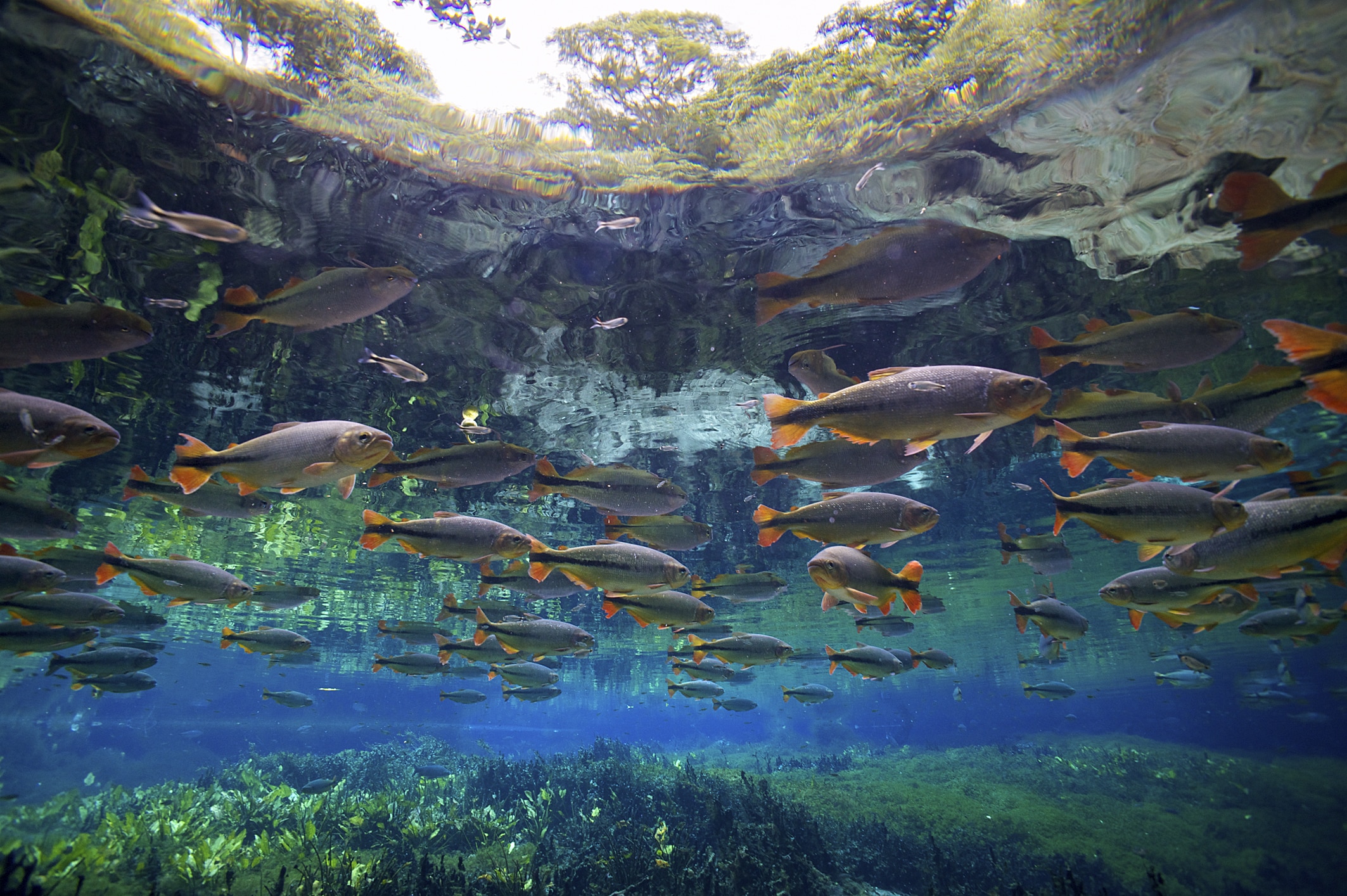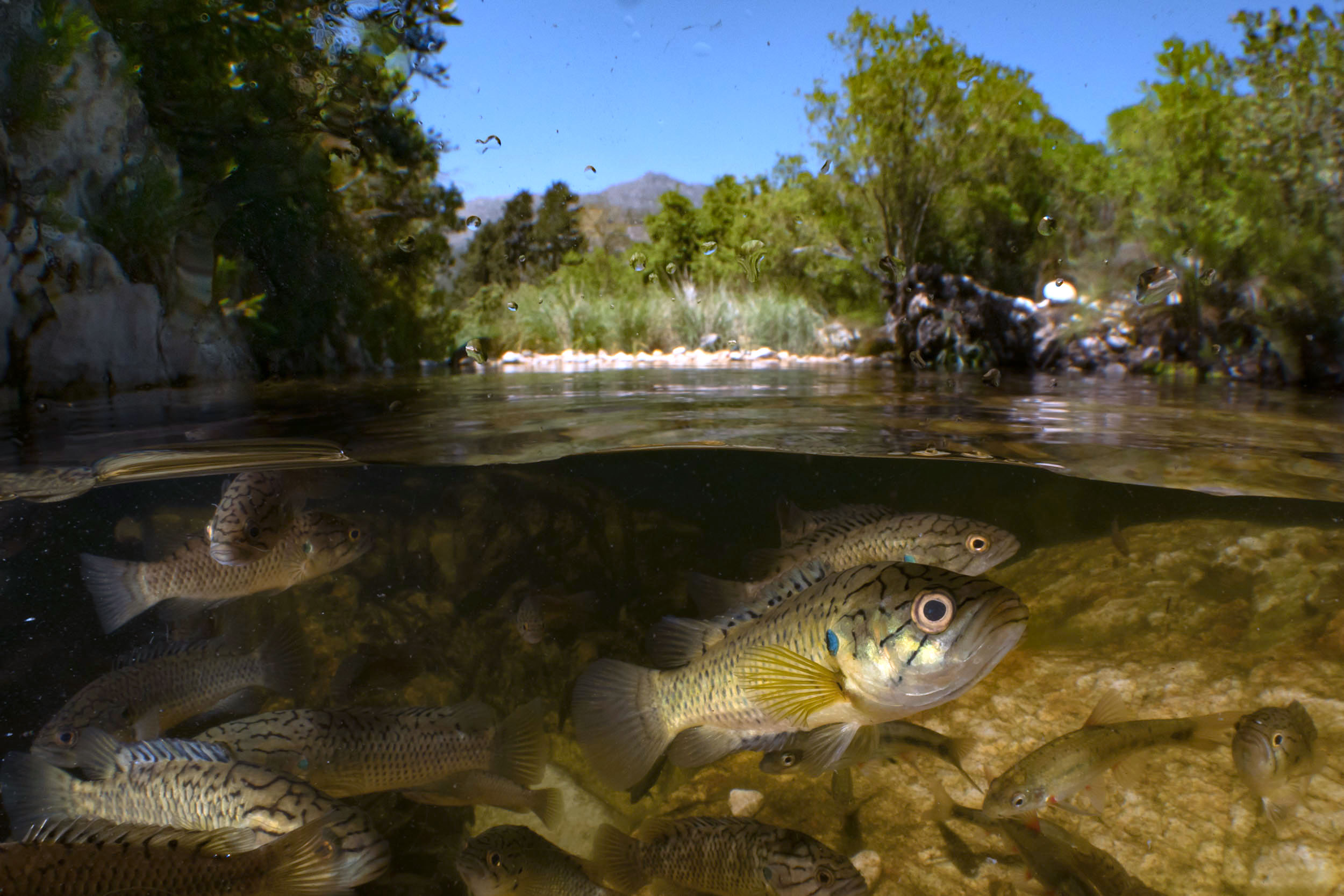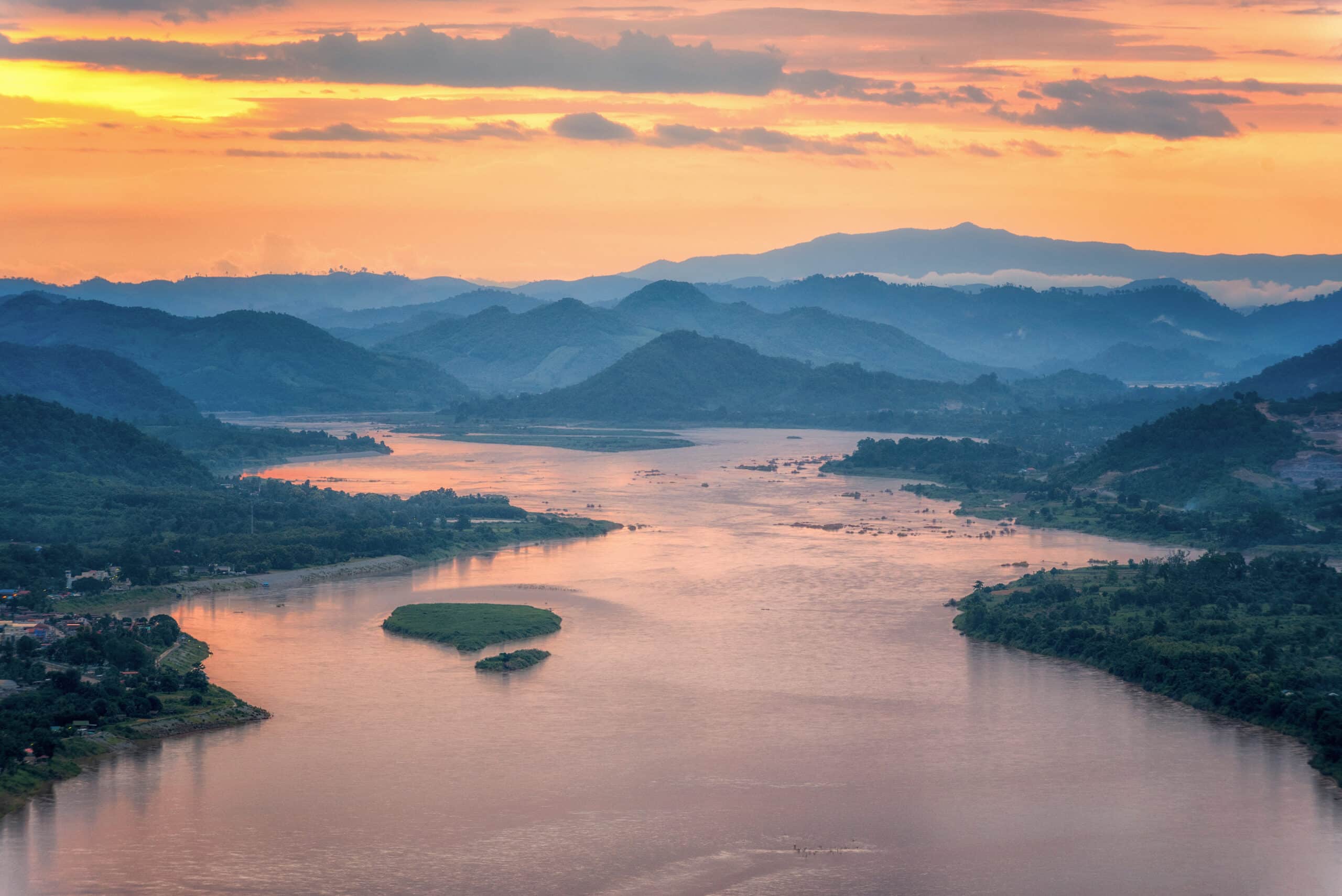by Michael Edmondstone
Aaron Koning is a freshwater ecologist and conservation scientist, and a Postdoctoral Research Fellow at the Global Water Center, University of Nevada, Reno. He has spent a number of years living and working in Thailand, where he has conducted extensive research in the Salween River basin, looking at the feasibility of freshwater ‘no take’ reserves, similar to marine models, for fish conservation.
Can you give some background to the community-led fish reserves in the Salween river basin?
In the Ngao River valley, the first community reserve was created in 1993 following the suggestion of a local community development organisation at a meeting a year earlier. This first community dedicated about 1 km of the river which flows adjacent to their village to be a reserve, prohibiting harvest of fish and other aquatic organisms from the entire area.
A second community adopted the practice in 1997, and in subsequent years, over 50 communities have created their own reserves throughout the 1,000 km2 Ngao River basin.
All told, these reserves amount to around 2 per cent of the total stream length. These reserves can be found in small streams (less than 3 m wide) all the way to the largest reaches of the river (wider than 40 m). Communities determine where reserves are designated, often marking the boundaries with flags or signs, and they also determine the penalties for offenders. These penalties range from around USD 16 to USD 300 per offence, or may involve non-monetary penalties among animist communities including offerings to appease an offended spirit or deity associated with a particular reserve.
And the research you conducted there?
I started my research in the Ngao River Valley in 2013 during my doctoral studies. I had lived in Thailand for 4 years previously, and a friend suggested that I look into the Ngao River as a potential study location.
My initial research was focused on understanding how land use and landcover throughout northern Thailand affects nutrient pollution in rivers. However, the first time I looked down at a pool full of fish in the community reserves, I became immediately interested in understanding the ecological effects and conservation benefits of these reserves. I ended up altering my research plan substantially once I saw just how effective these reserves could be.
Critical to the success of the research was the generosity of local communities in letting me explore and study these areas and helping me in so many ways over the years in which I’ve done research there. The results of the study are just a testament to the communities’ success in developing and maintaining this important and effective conservation action.
What were your findings?
Our findings show that this network of small no-take reserves is highly effective at protecting fish diversity, particularly in areas where dependence on fish for food is high. My colleague Martin and I surveyed 23 reserves and adjacent fished areas, and found on average reserves held 27 per cent more fish species, more than twice the density of fish (+124 per cent), and over 20 times higher biomass of fish than unprotected areas.
Importantly, these benefits were independent of any potential habitat differences between the areas. We also found that many of the principles developed for designing reserves in marine systems also predicted the success of individual reserves in our study sites. For example, larger reserves generally had larger benefits for fish than smaller reserves. Also, reserves that were located closer to communities were generally more successful at protecting fish, particularly for larger-bodied species. By placing the reserve nearby, communities are able to more effectively survey the reserve and deter illegal harvest, it seems. In fact, many communities explicitly stated this as the rationale for siting the reserves where they did.
We also found evidence that the network position of a reserve influenced the benefits for particular groups of fish. For example, reserves that were more centrally located within the broader network benefitted some fish species more (e.g., those less likely to move long distances), while reserves located near the confluence with a larger river downstream benefitted others (e.g., larger species that may rely on connectivity to larger downstream habitats). This indicates that the network benefit of multiple reserves is important, and that tailoring the locations of reserves within the river network based on the fish targeted for conservation is important.

It sounds as though these reserves sprang up very naturally, from local community cooperation. Can you offer any advice for other communities around the world who may wish to set up their own reserves?
Well, these results definitely provide optimism that freshwater reserves can provide real benefits for fish. Furthermore, the large number of reserves that have been implemented throughout Southeast Asia for conservation suggests the benefits of similar no-take areas transfer regionally.
But when I ask friends in the communities what their advice is, the answer I most commonly get is encouragement to just do it. Many folks will say, “Just make a reserve, you’ll get more fish!”
I would echo this encouragement and suggest that, for communities who are able to work together to implement a reserve, they make it as large as feasible for their own management capacity, and to work with nearby communities to do the same, as multiple reserves seem to provide additional benefits.
But that shouldn’t discourage communities from implementing even small reserves. We saw large benefits for fish from reserve areas that covered less than a hectare. If smaller areas begin to show benefits, it can encourage communities to increase the number or size of existing reserves. That’s something that has happened among Ngao River communities, too.
I would caution that it might take a few years before differences might show up, but we saw benefits in reserves that were established for 3 years. Every socioecological context is different, of course, but these are some of the lessons we can take from our study and try to apply elsewhere.
The model sounds so simple – ‘don’t fish in these areas’ – and so effective. What barriers do you think there are to establishing reserves like this in other rivers and lakes around the world?
The concept itself is simple, but like any resource management strategy, the success comes down to whether people, both within the community and outside it, accept and support the strategy and abide by the rules. Effective governance and benefit sharing are key to conservation success across the globe. In this case, the communities themselves are implementing the action, developing the system of governance, and negotiating how the benefits are spread throughout the community. It’s not a system being imposed on the resource users, but coming from the resource users themselves.
The communities along the Ngao River are able to effectively do this in large part because of strong social cohesion and a history of communal management of resources including agricultural lands, drinking water, and fishing resources, among others. The communities, which are ethnically Karen (or P’ganyaw), have a strong cultural identity related to conservation practices for forests, water, and wildlife. Thus, these no-take fish reserves fit into a much broader community ethic of taking care of nature and each other. In areas where there isn’t the same community-wide buy-in for a conservation action, achieving the same success will likely be more of a challenge.
There’s an important, growing recognition of successful indigenous and local resource management systems around the world that mirror the success of the Ngao River communities. These systems are often successful because they are informed by the local communities and their knowledge of the ecological system, and their management actions are tailored accordingly.
Barriers to broader implementation of freshwater reserves may in part come from inequitable governance structures or a failure to ensure the benefits of the reserve were shared among stakeholders. Part of the answer to this question is rolled into the answer to the next question.

Why do you think it has taken so long for the idea of freshwater reserves, similar to marine no-take zones, to be fully explored?
The idea of Freshwater Protected Areas has been discussed for quite a few years, and there have been a number of studies that have presented evidence that they do or don’t work in various contexts. However, I think freshwater protection often gets overlooked because freshwater ecosystems are really limited in their extent on the landscape. Less than 1% of the earth’s surface is freshwater habitat, yet these habitats still hold roughly half of the world’s known fish species and thousands of other important biodiversity. Because many of the major threats to freshwater habitats result from land-based pollution or changes in land use and landcover within river basins, the general thinking has been that terrestrial protected areas sufficiently protect the rivers and lakes within their boundaries.
Terrestrial parks are really important for protecting freshwater habitats from land-based threats, and from that perspective it makes sense that this is the model that has been most widely applied for freshwater protection. Yet, there’s also good evidence that terrestrial reserves are infrequently sited based on patterns of freshwater diversity, and therefore leave gaps in protection. Also, rivers often flow through protected areas, and frequently serve as protected area boundaries, meaning they may end up providing limited protection for freshwater biodiversity. In this framework, protected areas are a management tool for species conservation, but they rarely address fish as a food source.
For protecting marine ecosystems, marine no-take reserves have been implemented largely as a response to fishing pressure or overfishing. While there is ongoing debate about how useful marine reserves are as a large-scale fisheries management tool, at smaller scales and among artisanal fishing communities, it seems there are real benefits for fishers.
Similarly, for freshwaters that continue to support important subsistence and commercial fisheries, overharvest can often be a more immediate threat to sustainable fisheries and freshwater diversity. It’s under these circumstances that I think freshwater reserves can be particularly effective. In essence, the Ngao River communities have designed their own reserve network, and they fish intensively at reserve boundaries to catch fish moving out of reserves. And fishers in Mae Ngao report that the reserves do benefit their catch, and often describe that without the reserves there would be no fish left to support their communities.
Unfortunately, rarely are freshwater ecosystems imperilled by a single threat like overharvest or land use change. Rather, there are frequently multiple interacting threats to a particular freshwater ecosystem and its biodiversity. So, while freshwater no-take reserves might address overharvest as a primary threat, they may offer partial, but insufficient long-term protection for freshwater biodiversity in areas of active deforestation, heavy industrial pollution, or basins impacted by dams, for example. Where multiple stressors or threats interact, successful conservation will likely require multiple forms of protection.
What research can we expect from you over the coming months?
I’ve got some ongoing work in the Ngao River trying to understand how important connectivity among the individual reserves is for their success. This is collaborative work with folks from Cornell University (Peter McIntyre), Carleton University in Ontario (Steve Cooke), the Fisheries Conservation Foundation, and University of Nevada, Reno (Zeb Hogan). We’re conducting a movement study of fish, fitting them with radio trackers, to see how they move seasonally and how they use reserve and non-reserve areas through time. Because many of these reserves are individually small, this connectivity among reserves may be really important for long term persistence of fish species that require larger habitats.

I’ve also recently started working on a couple of projects in Cambodia as a postdoctoral fellow with the University of Nevada, Reno’s Wonders of the Mekong project. Around 2012, the Cambodian government created several large no-take reserves. Additionally, many communities are authorised to manage their own fisheries under the Cambodian Fisheries Administration. These community-managed fishery areas typically include small no-take areas as well. In each of these contexts we’re working to understand how effective these reserves are for maintaining biodiversity and sustaining fisheries to see if the lessons we’ve learned in the Ngao River scale up and transfer to this important regional fishery. By studying these systems we’re hoping to gain further insights into how no-take areas might benefit both fish conservation and sustain fisheries in other contexts around the world. This work is ongoing and impacted by travel restrictions for the time being, but I’m looking forward to ramping up our work in the coming months.

Stay up to date with Aaron’s work via his website: aaronkoning.com and his Twitter account: @akoning.


)
)
)

)